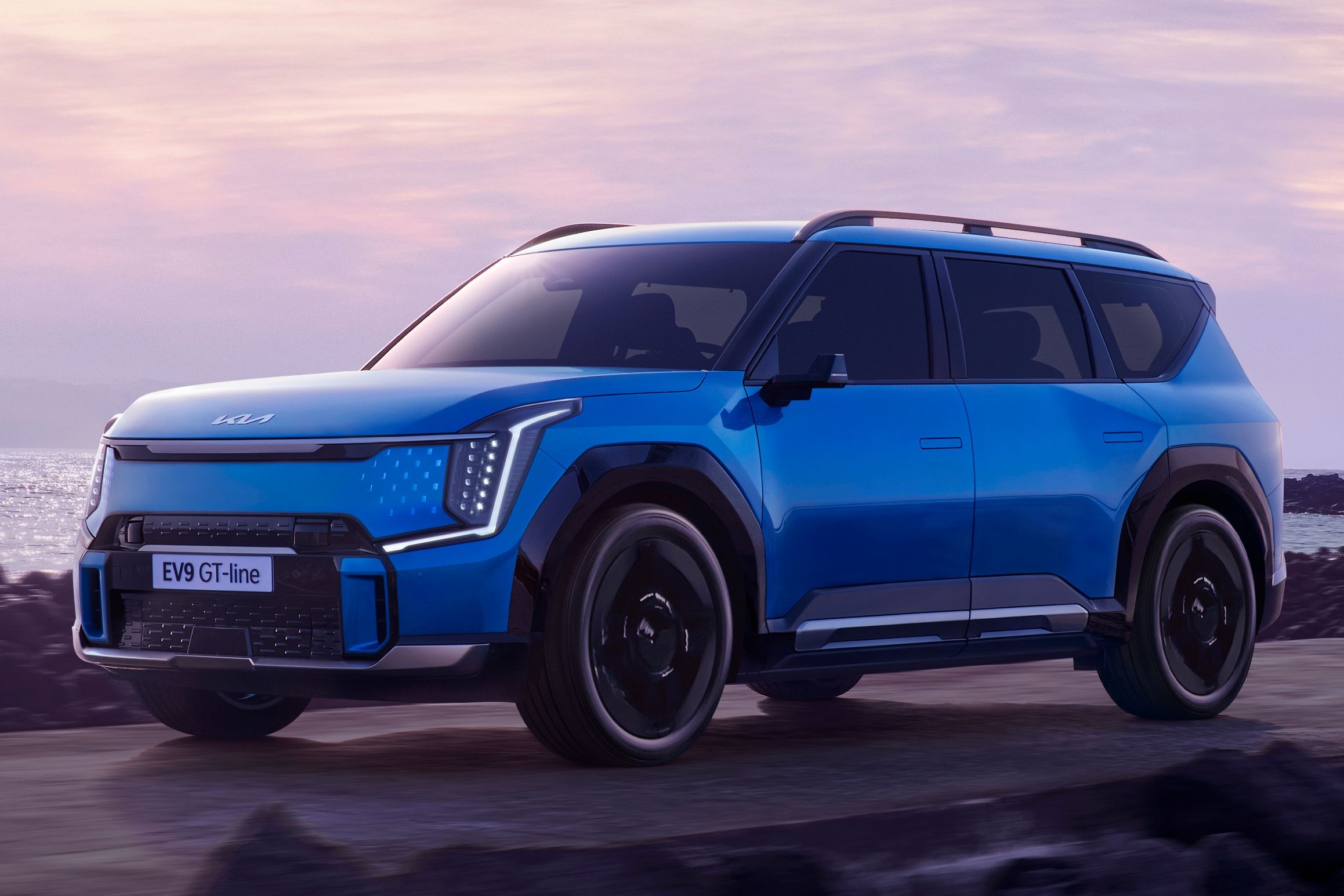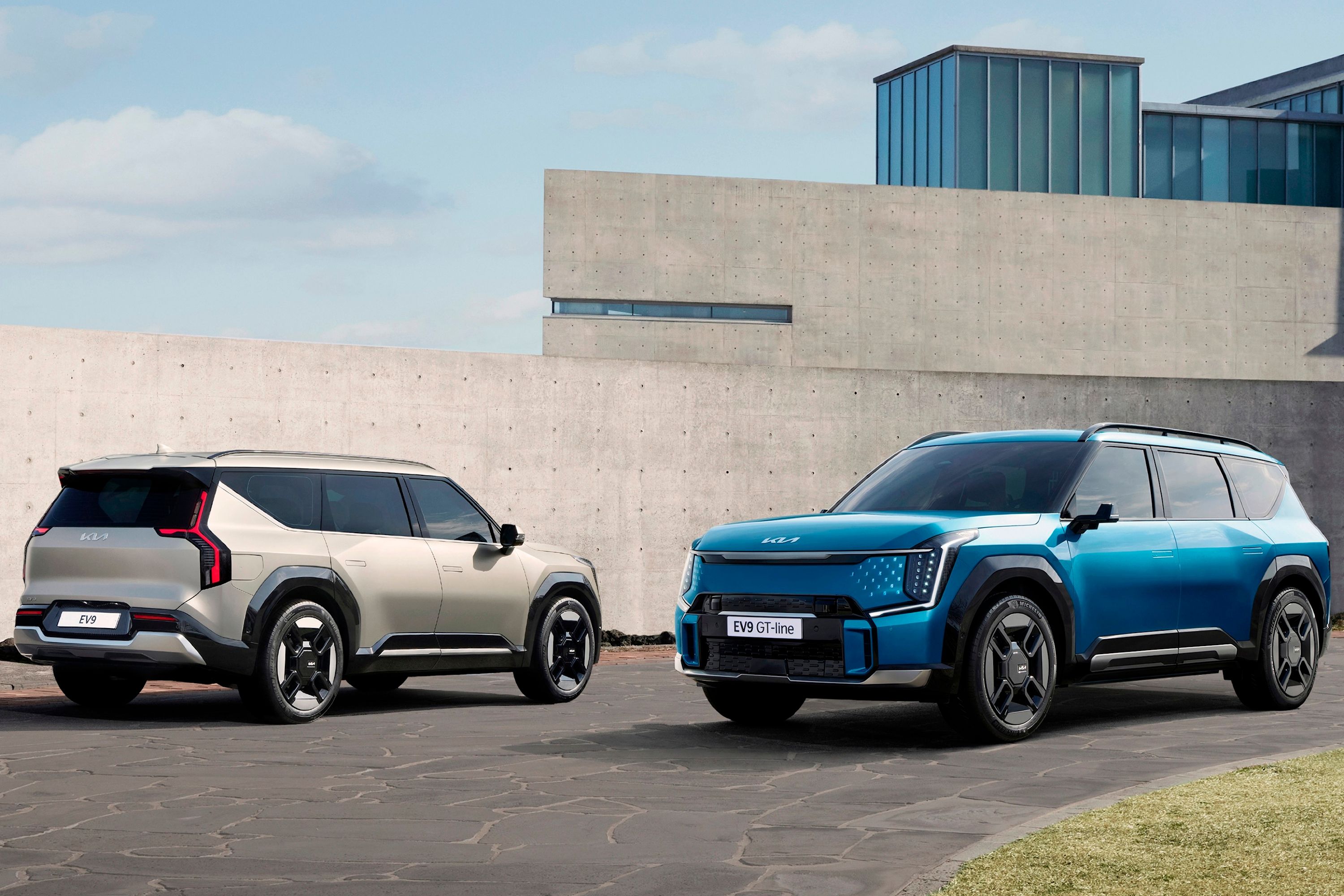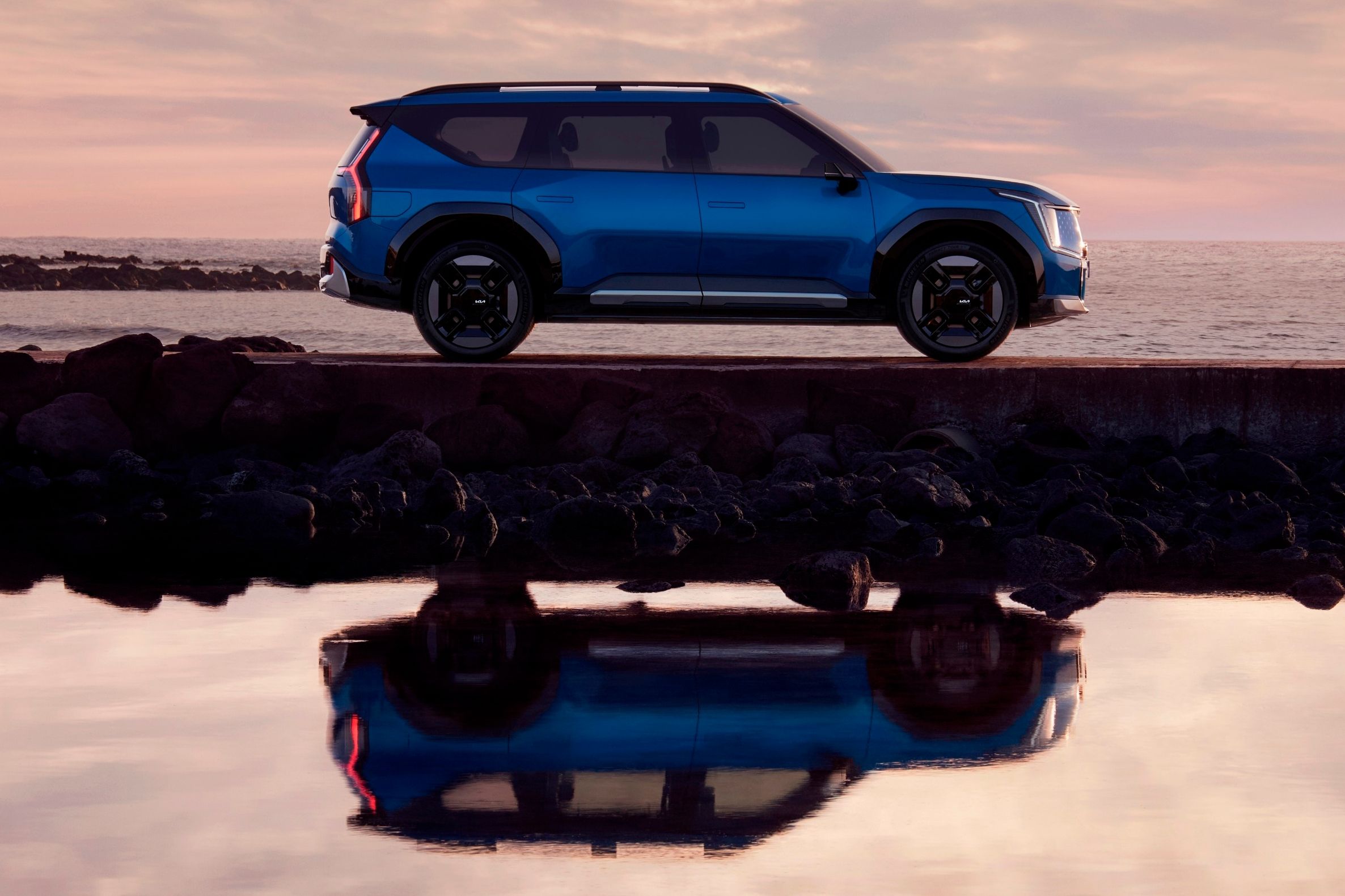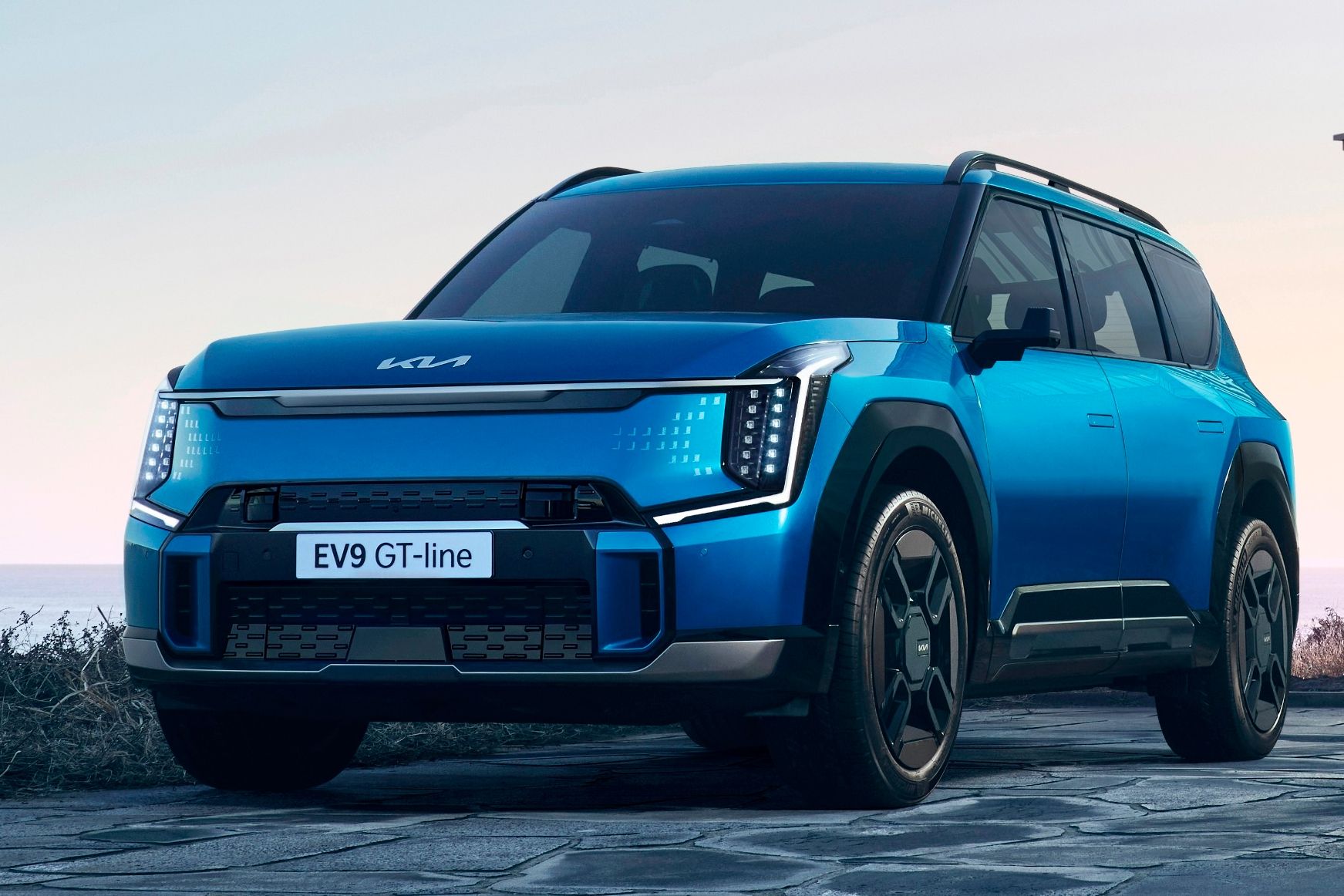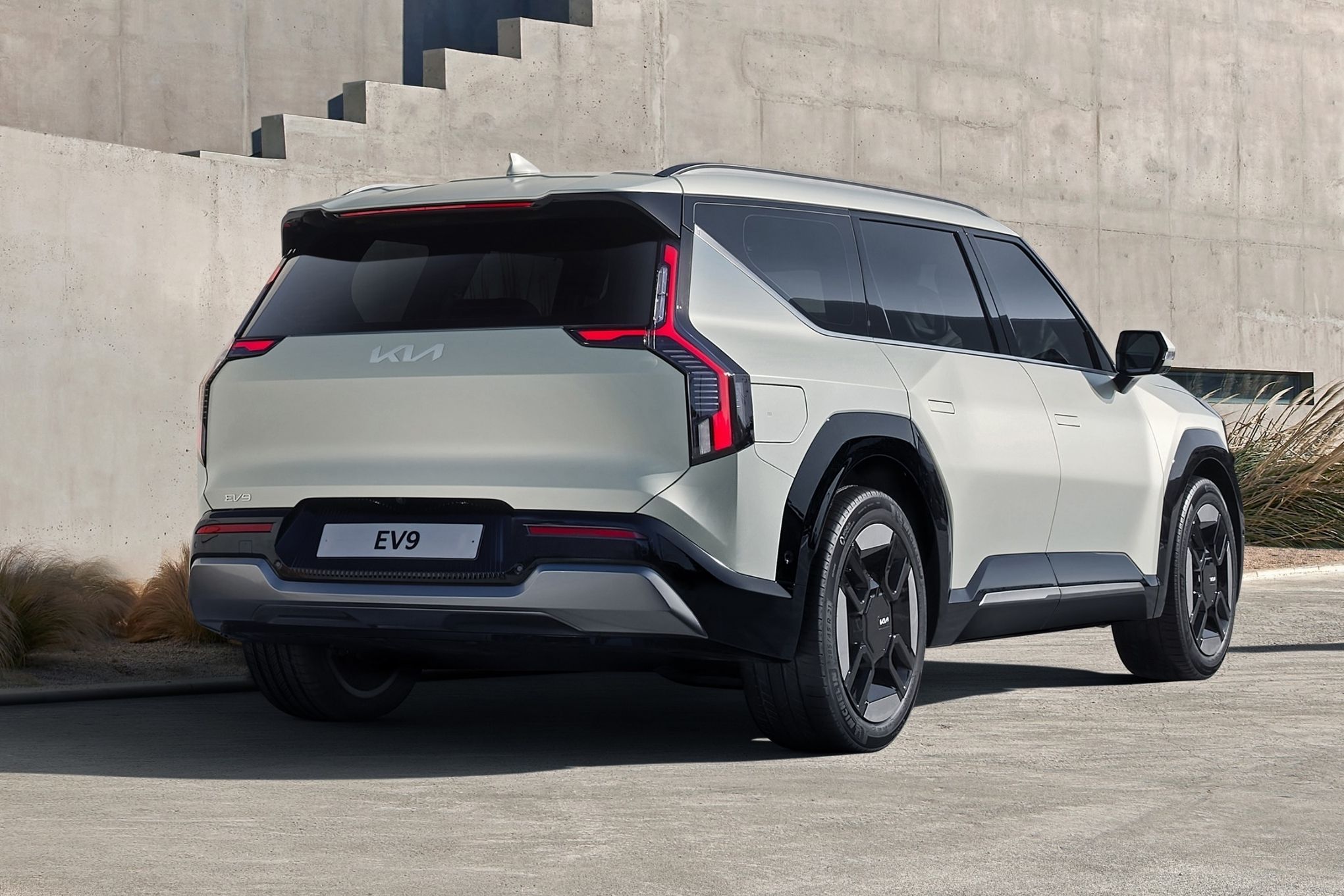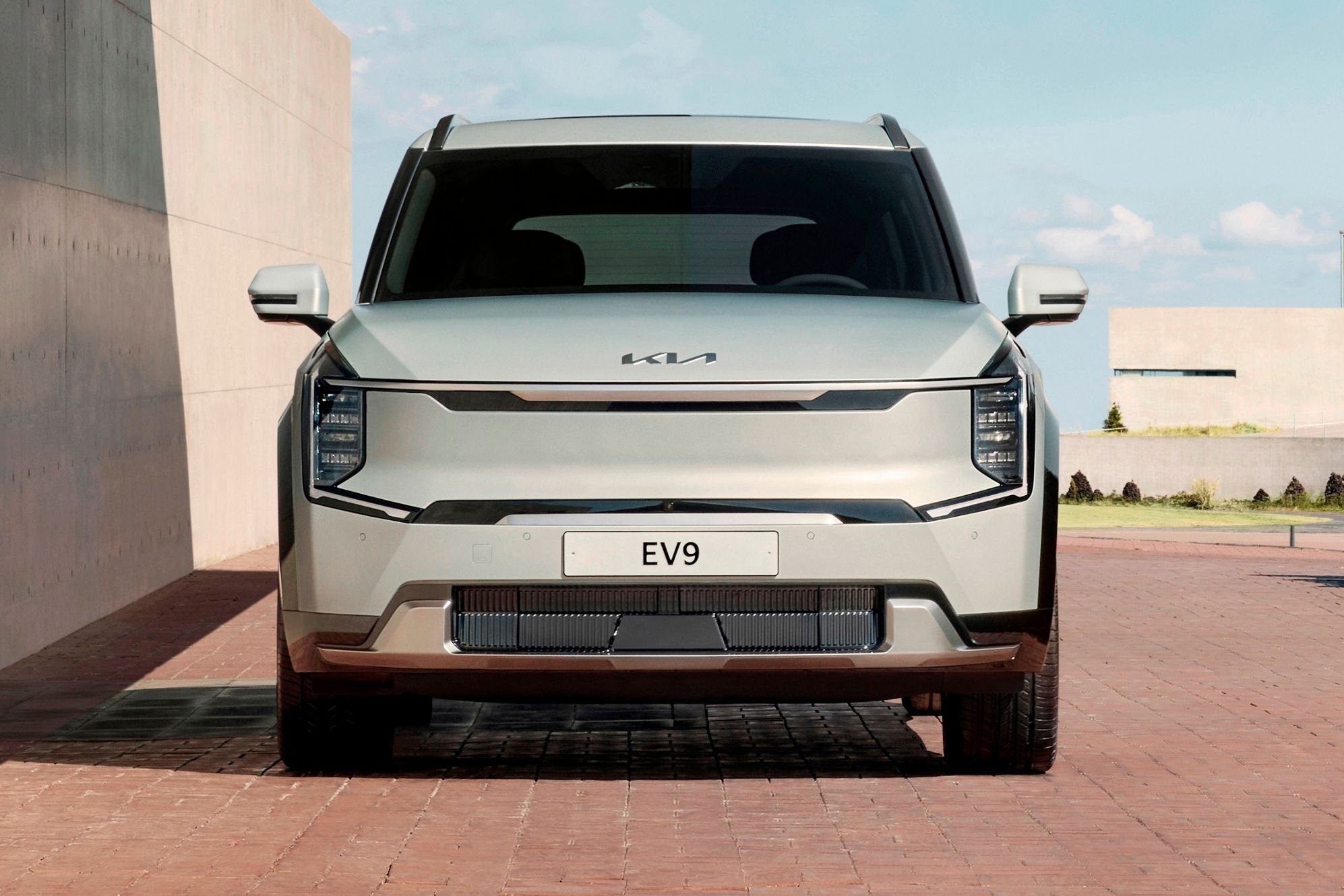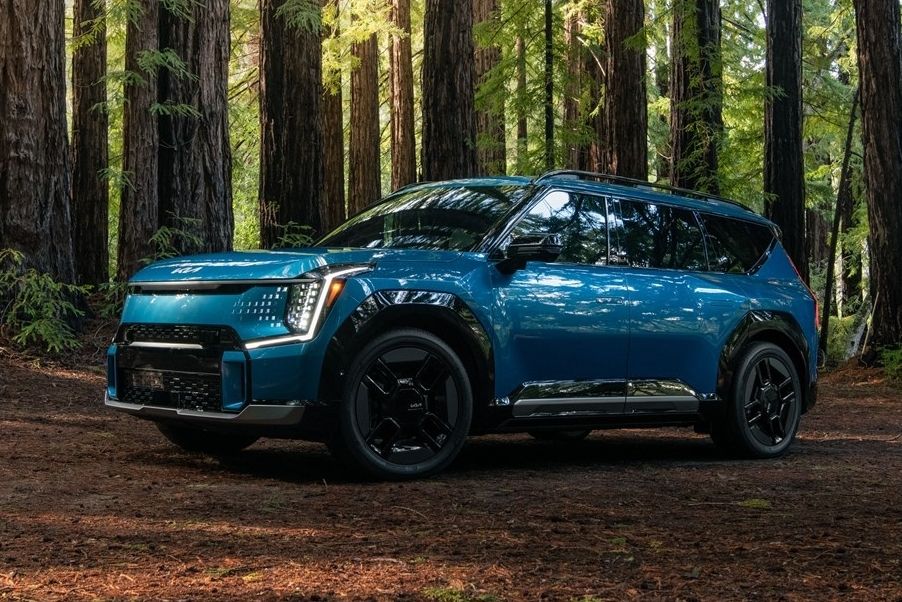
Kia finally released the full details of the all-new EV9 three-row crossover two weeks after showcasing the production-ready design. We won't dive too deeply into the "Opposites United" design details but will fill in some blanks Kia left out of the first press release.
First, the actual size of the thing. The EV9 is 197.2 inches long, 80 inches wide, and 69 inches tall. It sits on a 122-inch wheelbase, the most important metric of the lot. To put that in perspective, it's roughly the same size as the Kia Telluride. The ICE car has a 114.2-inch wheelbase, again demonstrating one of the main positive attributes connected to EVs.
A flat floor with no mechanical connection between the front and rear wheels is a huge advantage. In this case, it grants the driver and passengers an additional 7.8 inches of space compared to a similarly-sized internal combustion vehicle.
The vehicle we saw earlier this month was the standard trim. A GT-line model will also be available, equipped with model-specific features like an exclusive "Digital Pattern Lighting Grille" and slightly tweaked front and rear bumpers, wheels, and a roof rack. The GT's grille is also finished in a distinctive black color, which helps it look more menacing, but that will be a nightmare to keep clean.
Since aerodynamics are extremely important in the EV era, Kia integrated several nifty features into the design. You can see the aerodynamic designs on the wheels and the air curtains integrated into the front bumper, but what you'll likely never get to see is the sculpted underbody cover, which is convex at the front of the car and concave at the rear.
The result is an aerodynamic coefficient of 0.28, which is highly impressive for its class. The average in the SUV/crossover segment is between 0.35 to 0.45. Another way of presenting it is that the EV9 slips through the air more efficiently than the Koenigsegg CCX and the McLaren F1, both of which have a Cd=0.32.
Just don't try to race the two hypercars mentioned above. The EV9 was obviously built to feel sufficiently spritely rather than to post nonsensical 0-60 mph times. Interestingly, Rolls-Royce took the same approach with the Spectre. The fellas in Goodwood could have given it a thousand horses, but instead, the first uber-luxury EV is simply "adequately powered" (it has 577 hp, if you were wondering). This bodes well for Kia because it means the brand understands the luxury segment.
The base rear-wheel-drive EV9 is equipped with a 76.1-kilowatt-hour battery, while the RWD Long Range and all-wheel-drive models have a 99.8-kWh battery.
Oddly, the Standard RWD model is more powerful than the Long Range RWD. It has a single rear-mounted motor producing 215 horsepower and 258 lb-ft of torque, good for a 0-62 mph time of 8.2 seconds. The Long Range RWD's electric motor produces the same torque, but the horsepower is dialed back to 201 hp. It takes 9.4 seconds to get to 62 mph.
The AWD model is equipped with the now familiar dual-motor setup with a combined power output of 380 hp and 443 lb-ft of torque. It's the fastest model currently available and will get to 62 mph in six seconds flat, assuming all seven seats are not filled. Kia says that a "Boost" feature will be available for purchase via the Kia Connect Store, which will increase the torque to 516 lb-ft. This boost will enable the EV9 to reach 62 mph in 5.3 seconds.
To us, the range is far more critical in a three-row family car. While it will spend 90% of its life confined to the suburbs, families may want to venture outside the concrete jungle on odd occasions.
Presently, Kia only provides an estimated range for the Long Range RWD, which will likely be the top seller. On 19-inch wheels, this particular trim has an estimated WLTP range of 338 miles. We'll have to wait for the EPA figures to make a fair comparison against its rivals. All models have an 800-volt charging system, which can add 149 miles of range within 15 minutes.
Basically, this is an EV you can take camping, especially once the government is finished with its $10 billion EV charging infrastructure plan in 2026. Using the Integrated Charging Control Unit (ICCU), the owner can use up to 3.68 kW to power things like camping equipment, power tools, or a projector for the ultimate outdoor movie night.
Kia has yet to reveal the complete list of standard features, but we have some basics, starting with safety. Kia mentions blind-spot collision avoidance, lane-keep assist, rear cross-traffic avoidance, parking collision avoidance, intelligent speed limit assist, and Ultra-Wide Band (UWB) technology that allows a smartphone to be used as a key.
Furthermore, the intelligent cruise control is navigation-based, while Kia's Highway Driving Assist 2 allows for autonomous lane changes as long as the driver remains attentive.
We touched on the interior in the original reveal article, but now we know even more. The EV9 is the first Kia vehicle to implement the South Korean brand's three-step Design Sustainability Strategy. In short, Kia wants to build an environmentally friendly interior, meaning no cows were harmed in making this SUV.
Kia is slowly moving to more sustainable materials made of recycled plastic, corn, sugarcane, and natural oils. A total of six interior color combinations will be available, while the exterior palette will draw inspiration from light, air, earth, and water. We hope there will be a blue called Captain Planet.
As for seating, it will be available in seven- and six-seater configurations. The second row offers three seating options, including a standard three-row bench, two relaxation seats that recline, and swivel seats. The swivel seats can go a full 180 degrees to face the third row or can be rotated outward to make loading a toddler easier.
The Kia EV9 won't be eligible for the $7,500 tax credit, which might be a chink in its armor. This might change in the future once Hyundai's battery plant in Georgia starts running at full capacity, in which case the EV9 will likely use batteries sourced in the USA. Kia's pricing for the EV9 leaked earlier this year, and at the time, it looked like a bargain.
Thanks to the latest press release, we now know why. Kia will soon launch the Kia Connect Store, allowing EV9 customers access to various features on demand. The car will ship with all the necessary hardware that can be upgraded and improved, but owners have to pay to use these features. The EV9 will have 15 sensors, two of which are LiDAR.
Using these items, Kia owners will eventually be able to unlock Kia's Highway Driving Pilot (HDP), a Level 3 system that allows for hands-free driving. HDP will be available on the GT model in the future.
Other available items include a Lighting Pattern for the Digital Pattern Lighting Grille, the additional torque mentioned earlier, remote start, and content streaming for the car's infotainment system. You can also pay extra for Advanced Driver Assistance Systems like remote parking. This is potentially a good idea, depending on how Kia implements it.
Customers and certain states are heavily opposed to subscription services, but a one-off payment is more palatable. After all, people pay for apps to improve their smartphones all the time.
The EV9 will make its North American debut at the upcoming New York International Motor Show in April.

